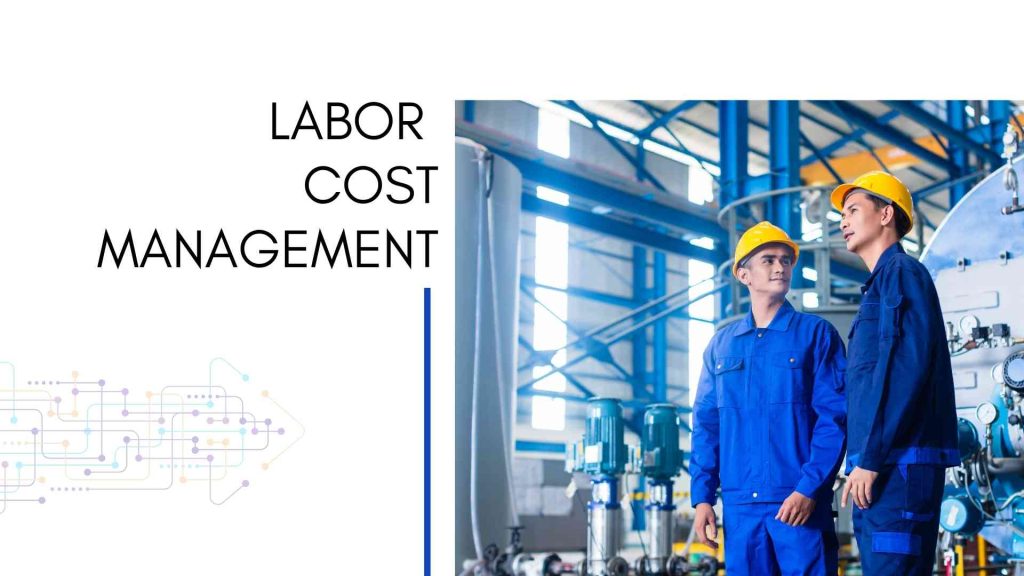In today’s dynamic business landscape, controlling labor costs while maintaining operational efficiency is a critical challenge for companies across industries. As organizations strive to remain competitive, they need practical tools to optimize their workforce and reduce expenses.
Challenges in labor cost management.
- Inaccurate labor cost forecasting
- Manual and error-prone time-tracking and payroll processes
- Inefficient resource allocation
- Lack of real-time insights and analytics
- Overstaffing or understaffing leads to unnecessary expenses
- Difficulty in complying with labor regulations
- Lack of integration between HR, finance, and production departments
- High overtime expenses
- Ineffective labor scheduling
- Limited visibility into labor-related expenses
- Difficulty in identifying cost drivers
- Inadequate data security measures for sensitive labor data
- Challenges in monitoring employee performance and productivity
- Inefficient communication and collaboration between departments
- High turnover rates and associated recruitment costs.
ERP system – a powerful solution that empowers businesses to take control of their labor costs and achieve significant cost reductions.
Streamlined Workforce Management:
An ERP system delivers a centralized platform for handling all aspects of human resources, from recruitment and employee onboarding to performance evaluations and offboarding. It streamlines HR processes, enabling businesses to make informed decisions about workforce allocation and reduce the overhead associated with redundant administrative tasks.
Intelligent Labor Scheduling:
With an ERP system, businesses can bid farewell to manual and error-prone scheduling. The ERP’s intelligent scheduling feature considers employee availability, skills, and workload, ensuring optimal staffing levels without overburdening the workforce. As a result, companies can avoid costly overtime expenses and achieve a balanced workload distribution.
Enhanced Productivity:
ERP systems offer real-time insights and analytics, enabling organizations to identify operational bottlenecks and inefficiencies. By pinpointing areas for improvement, businesses can optimize production processes, improve workforce productivity, and reduce labor costs associated with inefficiencies.
Accurate Labor Cost Forecasting:
Accurate labor cost forecasting is vital for budgeting and financial planning. ERP systems leverage historical data, trends, and performance metrics for accurate labor cost projections. It helps businesses make data-driven decisions and allocate resources more effectively, reducing costs.
Automation of Time-Tracking and Payroll:
An ERP system automates time-tracking and payroll processes, eliminating the need for manual record-keeping and reducing errors. Automated payroll systems ensure accurate and timely employee compensation, preventing costly disputes and unnecessary expenditures.
Integration for Cost Control:
ERPs integrate various business functions, including HR, finance, and production. This integration fosters collaboration between departments, allowing them to work in sync towards common cost reduction goals. Data sharing and real-time updates ensure that decisions are well-informed and aligned with the business strategy.
Efficient Resource Allocation:
By analyzing data on employee performance, project progress, and customer demands, an ERP system assists in making informed decisions regarding resource allocation. Companies can allocate their labor force efficiently, avoiding excessive staffing that can lead to unnecessary expenses.
Compliance and Labor Regulation Adherence:
An ERP system helps organizations stay compliant with labor regulations, mitigating the risk of penalties and fines associated with non-compliance. This level of adherence ensures that labor practices are ethically sound and align with industry standards.
Data Security and Confidentiality:
Security is a top priority for any business, and ERPs come equipped with robust data protection measures. As sensitive and confidential, labor data is safeguarded with encryption and access management to control unauthorized access and potential breaches.
In conclusion, an ERP system empowers businesses to take control of labor costs through streamlined workforce management, intelligent scheduling, enhanced productivity, accurate cost forecasting, automation of time-tracking and payroll, and efficient resource allocation. Moreover, ERPs foster collaboration between departments, ensure compliance with labor regulations, and provide robust data security.
Embracing an ERP system can revolutionize labor cost management, enabling businesses to optimize operations and thrive in today’s competitive market. By adopting this technology, companies can reduce labor costs and gain a competitive edge by utilizing resources more efficiently, fostering innovation, and achieving sustainable growth.
As the digital era progresses, the role of ERP systems in managing labor costs and driving business success will only continue to grow, making it a wise investment for companies seeking to stay ahead in a rapidly changing world.

Vijay comes with a vast experience in ERP and enterprise solutions space with about 20 years of experience in various packaged application like Acumatica, SAP, Orion, Salesforce.com, SugarCRM and, SalesLogix.

